
17 minute read
a form of Visual Curricular Connection
with behavioral difficulties. It also means knowing how your counselors should work with your administrators, curriculum coordinators, admissions department, learning support team, and teaching teams.
Savvy administrators understand that an effective counselor can reduce their workload, ameliorate sources of school stress, and proactively anticipate troubles that may be on the horizon, but only when their counselors are working at their best.
Does your teaching faculty understand the role of your counsellors? Has time been allotted to, for example, a staff meeting so that your counselors can get out in front of their messaging? Do your counselors proactively communicate with staff, parents and students? In the absence of clear communication about the way that your counselors can work to build community, assumptions will be made about their roles and how counselors should spend their time. When counselors are pulled into tasks and activities that go beyond the scope of their job description, or the boundaries of their training, this can become a source of stress and eventual systemic dysfunction.
Do you see your counselors as sources of leadership in your school? Counselors often occupy a role in schools that exists somewhere between teacher and assistant principal, and yet counselors also uniquely value-add in important ways that can Take, for example, a conversation about the possible grade retention of a student. Counselors are uniquely positioned to work to synthesize different opinions from stakeholders, advocate for the student and/or family, and also run the process through identified tools4 that can provide the school with a robust and authentic decision-making process.
Empower counsellors for the good of all In this article we have urged you to consider the potential avenues for collaborating with your counselors in order to strengthen, safeguard and grow your community whilst remaining mindful that a sustainable, balanced approach will always maximise a counselor’s impact. Counseling content has dramatically shifted to the mainstream in recent years, with classrooms and schools focusing on psychological safety, wellbeing and personal and social education. Given this, the input, guidance and support that your schoolbased counselors can offer is a resource worth investing and reinvesting in.
INNOVATION in your CLASSROOM: SKETCHNOTING as a form of Visual Curricular Con-
nection By Ms. Jill Allyn Carter, PS-Grade 12 Art Instructor

I entered the huge McCormick Place Convention Center in Chicago Illinois for the International Society of Technology Educators (ISTE) in June 2018. I found many great booths to find information on the latest technology. I went to the EdTECH booth to watch and learn from Sylvia Duckworh (@ sylviaduckworth) as she was introducing Sketchnoting to a small group of educators on why drawing was so important to learning in ALL AREAS OF OUR CURRICULUM. As Sylvia says in her book “It’s about the ideas, not the art.” ( How to sketchnote: A Step-By-Step Manual for Teachers and Students.) 2015
Sylvia, a former French teacher from Canada gave a 20 minute demonstration and I was hooked. I have always known drawing was important in the learning process especially in the Art Studio. But, I wanted to see how drawing could be looked at as what I will call a “curricular glue” for learning. I believe sketchnoting can help. “Sketchnoting is not art” (SD) But, I now believe sketchnoting helps students make connections in all areas of learning in analog and digital styles. My colleague, Alexis Snider Grade 4 teacher at Concordia International School Hanoi (CISH) invited me to present my PD learning from ISTE at the Hanoi technology teachers meeting being held at CISH in Sept, 2018. I told her I would like to talk on how I am using Sketchnoting with my MS-HS art students in their sketchbooks. I showed how I present the information for our NEW ART PROJECTS by using anchor chart paper and a marker in analog style. I had photos of my students sketchnotes and how I felt it was working on empowering my art students understanding of the art work they would produce past the sketchnote. Alexis then started working with her Grade 4 students using sketchnoting in Math and in English. I was very happy to see her students enjoying their learning using a drawing pencil while sketchnoting their understanding.
Sylvia says in her book that you will have to decide what to start with analog or digital. I chose analog-pen/pencils/ markers to start. I saw myself as a learner just like my students learning something new. I personally had more confidence with my drawing pencils then my Apple pen. But soon Alexis and I were participating in #sketchnotefever on Sylvia’s website and moved to digital and were using the app Procreate with an Apple pencil on my ipad pro.
Alexis connected with Sylvia and invited her to CISH during her World Sketchnoting Tour on Nov 2, 2019. During our morning session we learned all about the basics of sketchnoting and the benefits of making visual connections. The afternoon included all hands on practice of various shapes, themes and even holidays. The final outcome was to produce our own sketchnote to start a journey in using sketchnoting as a form of visual communication and thinking in your classroom. The 28 participants were from all curricular areas including Administration. I also want to thank our ES Principal , Kristin Kappleman for supporting our efforts to bring Sylvia to the new CISH ART STUDIO and seeing sketchnoting as a valuable learning process.
Now I think.....we should use drawing as a means of communication in all curricular areas to show and explain our learning.... I want to be part of this curricular glue to make drawing easy for all by sharing sketchnoting as a learning tool for visual note-taking. My sincere thanks to Sylvia Duckworth and all the best in your retirement. Thank you for including us on your Sketchnoting World Tour.
Press Release LET THE STUDENTS INTO YOUR EDUCATIONAL CONFERENCE: YOU MAY BE SURPRISED BY wHAT YOU DISCOVER!
By Adam Carter, Western Academy of Beijing (WAB) adam_carter@wab.edu
It has become painfully obvious that due to a changing workplace, a globalized world and an uncertain future, we as educators need to adapt our model of education to fit the needs of our students and adopt a more 21st century outlook. Countless articles, TED talks and scholarly studies have emphasized the urgency we need to devote towards creating schools that step away from a staid, traditional style of education in order to implement more student-focused learning. And several times a year, teachers, administrators and guest speakers convene at educational conferences to tell each other what they should be doing to help their students receive a more engaging, real-world 21st century learning experience.
It’s encouraging to know these conversations are happening, but there’s one important piece of the puzzle that’s missing: the students. Why do we lock students out of educational conferences, when it’s their education we are discussing and planning behind closed doors? Due to this perceived shortcoming, Western Academy of Beijing (WAB) and OWN Academy recently set out to create a new model that includes students in the conversation.
At their Future of Education Now (FOEN) Conference in November, WAB invited OWN Academy to run a student-track during their conference; the inspirational results presented a refreshing approach that educational conferences worldwide may want to consider adopting.
Twenty middle and high-school students (from four international schools in Beijing) participated in the three-day “Youth Changemakers” program. The goal of the program, as explained by Natalie Chan, the dynamic founder of OWN Academy was, “for students to create the world they want to live in through reimagining, redesigning and re-engineering school. The students gain a wider perspective in a real-world set up alongside teaching professionals to get first-hand insights and challenges.” Being a teacher at WAB and a presenter at the conference, I volunteered to help her run the program. Also part of the team was another WAB teacher and a WAB graduate currently studying at UCal Berkeley that came home to mentor the students.
Before the conference, students filled out a survey to identify their major strengths and record their overall impression of their schools, documenting what they liked/disliked and how they felt their schools could improve. When they met on Day One, they reviewed their answers, and based on their strength profiles, they divided themselves into three groups that would tackle the program’s different tasks: website/text, video and presentation.
They then discussed what their goals of the conference were and came up with a mission statement: “In order to be supportive, personalized and academically successful, a school should be student-centered, feature numerous approaches to learning and offer curriculum with real-world connections with mentor support.”
From there, the students attended the sessions, which ranged from keynote speakers by inspirational educators like Sir John Jones, Rosan Bosch and conservationist hero Jane Goodall to more specific sessions like the Future Role of Artificial Intelligence in Education and Neuroscience: From Research to Practice for All. Students had a chance to not only sit in on workshops, but actively participate. At a workshop I delivered entitled Student Media Creation, I was able to ask students questions like, “Did creating podcasts make you feel more engaged with the unit?” Several teachers told me after the session that the students’ feedback in the workshop provided them with really valuable evidence of why they should adopt some of the digital tools I introduced. Besides participating in the sessions, the Young Changemakers were also able to interview the speakers afterwards, which yielded some really insightful conversations. Meanwhile, they convened in a “war room” of sorts in order to start creating their website, edit their video and plan their presentation for the Closing Ceremonies.
After just three days, when the conference ended, the students got on stage to explain their project, display their website and show their video. They touted the benefits of initiatives like flexible schedules, project-based learning and mentorship programs, but perhaps the main gist of their message to the conference attendees and organizers is that schools need to include student voice in their plans of building curriculum and implementing new programs. At the end, the audience had a chance to ask the students questions, providing the ultimate “flipped classroom.”
As John D’Arcy, Deputy Director of WAB and conference organizer pointed out, “For all of our schools, the future of education is about creating ‘schooling’ that is relevant, significant, and has an authentic purpose. Nathalie, with her team of educators and students, created an experience that was all of these things and produced incredible results, as evidence by the standing ovation the students received for their work - perhaps the most authentic and meaningful assessment they could have received.” This sentiment was shared by the students; Anvith Anand (7th grader from WAB) reflected, “This was a great opportunity for us as students to be involved in this process and recognize our potential to help create change in our schools.”

As one of the facilitators, it was inspiring to see the teachers actively listening to what these students had to say. But the students themselves noticed as well; at one point, one of the students, Katarina Krajnovic (11th grader from WAB) explained to the audience, “Seeing you teachers out there actually taking notes about what we are saying is adorable.” Sure, her comment elicited a lot of laughter, but it perfectly encapsulates the beauty of this model. Student voice is not a buzzword we as educators should whisper about; it’s a concept that needs to be discussed and planned with students, by students and for students. After seeing the success of this new model of student involvement in educational conferences, it seems like a natural fit that any educational conference, in order to be a true success, should embrace a program like this one to make sure that students’ voices are a part of the conversation, not an afterthought.
[The website the students created (with the video embedded) can be viewed here: https://tinyurl.com/tay3bck. OWN Academy (www.ownacademy.co) is a Hong-Kong based educational organization that aims to empower youth to be changemakers in the future. They run a variety of programs, focusing mainly on efforts to bring students directly into industries for project-based learning, connecting young people with mentors and real-world experiences.]
Galleries Drive Process and Inspire Reflection
By Daniel DiGregorio and Lee Li
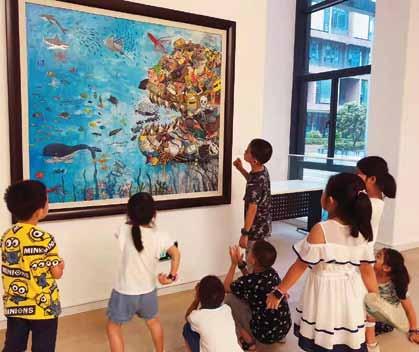
Under the Sea Whole School Exhibition- Gavin Ju Grade 5 “Escape”
Opening night – everything looks pristine, impressive and beautiful. Surprise, excitement, and joy can be seen throughout the room. Art and snacks entice people to shuffle into the gallery. The event is amazing and students are proud – a sense of catharsis as their artistic labor is displayed. This can happen in any space but this wonderful night is not all that it appears to be. In many spaces like these, the work being displayed and the excitement which accompanies it generally evaporate once the space has transformed, perhaps back into a cafeteria or gym within a few hours.
Thanks to a generous donation from the Han’s Group (a leading technology company in Shenzhen, China), our school was able to build a permanent gallery. The space has been open for just over a year and has steadily played host to many events for both students, staff and visiting artists. From day one, students purposefully ingrained this space within their process, integrating it into their thinking and vision for their projects. Conferences, meetings, presentations, classes, visiting artists and collaborative shows have taken place here and of course, many exhibitions. The space helps provide a warm and inviting environment to showcase creativity and visual communication. It is a meeting point for the community and an area to come together as a creative family. Schools have long pushed for gyms, fields, theaters labs and pools, why not galleries?
The buzzing nights before an opening typically resemble a bit of chaos with a growing sense of order. The students, in this disorder, are learning lessons through the lens of an exhibition. Other students and teachers stop by and witness the magic behind the curtain, sparking conversations between departments and inspiring new challenges. Since the space is on campus, these new challenges occur frequently. Students have made this space their new classroom, bringing their art to life. They find out that some ideas don’t work out the way they planned, even just hours before an opening. Other students find new connections between their work and the work of others, even visiting artists, further creating a lasting impression for a lifelong love of the arts.
After the opening, the weeks go on and the show remains for all to visit. One of the greatest experiences has been when a grade one class stopped by to ask the grade twelve artists questions. The ‘See, Think, and Wonder’ were more than words on paper, considering the curious approach younger students had towards their artwork left the upper classmen with resounding feelings of fulfillment. Leaving a space open exposes all to the event, breaking down barriers of pretentiousness. Even if visitors don’t feel inherently ‘artistic’, they get to comfortably take everything in at their own pace. Within a place of learning, less importance should be placed on the opening night and ceremony with more on what others can take away from the experience. This long-lasting timeframe allows others to use it as a resource, as without a lasting gallery space the work and learning would not be shared as conveniently or readily with the wider community. Students from across campus have the freedom to engage with artwork at their leisure.
When it comes time to retire the work, the process starts all over again with a new group and theme, along with the opportunity to ideate and create work anew. The space drives the processes of wave upon wave of student works and thinking. As one exhibition comes down, another is being prepared. The cycle continues and with each opening the experiences become increasingly rich, while the space is utilized in new and inventive ways. As students take down their work, they are already discussing the event, and as an art teacher, the conversations fill my heart with joy. They discuss elements of curation, how it can be improved and the individual works which surprisingly captured the audience’s attention. They notice how people move in the space, and plan for next year, keeping audience interaction in mind. They engage with comment slips and read aloud how their work inspired a young aspiring artist, or how a work brightened someone else’s day. Seeing the full cycle helps them realize all the hard work they put into the art paid off – that the late nights were not for nothing.

First Annual Shenzhen Secondary School Interntional Art Exhibition- Fair and Unfair (4 School collaborative exhibition)
Seoul International School
Drawing Me (top left) Grace Lee, 8th Grade Media: Permanent Marker on Paper
Dua Lipa (top right) Hannah Yi, 7th Grade Media: Graphite Pencil and Feathers on Paper International Christian School - Hong Kong

Animal Drawing, Color pencils, Sketchbook Assignment, Cassia Yap, Grade 7 (left) Gustav Klimt (Art Nouveau) Portrait, Mixed Media, Shanna Chong, Grade 8 (right)
Middle School Art Celebration


Thai-Chinese International School
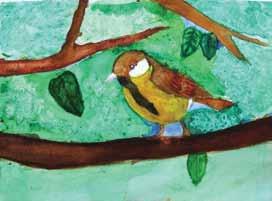
Under the Sea (left) Ruttasit Nasongkhla (Jade), Grade 5 Media: Watercolor Bird Group Composition Detail (right) Hao-Yu Li (Jack), Grade 8 Media: Watercolor

Bandung Independent School
Arvin, Grade 10 Mixed Media on Paper Grade 9 and 10 Students created booklets of mixed media that reflect the seven different elements of art.
Concordia International School Hanoi
Jinseo Park Grade 8 (left) Sung Yeon Park Grade 8 (right)


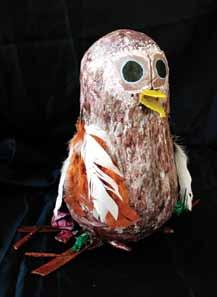
Nanjing International School
Amber Owczarek, Grade 8 (left) Amelia Cleere, Grade 7 (right)
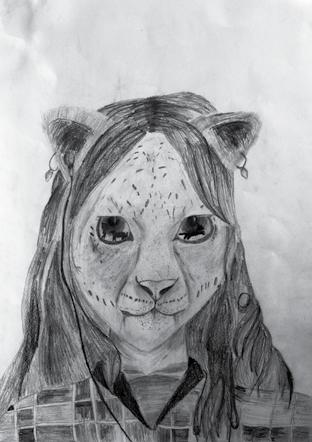
Brent International School Manila
Acrylic painting, Kim Hyunju, Grade 8 (top left) Gabriela Garciga, Grade 7 (right)




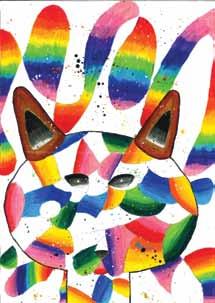

International School Kuantan
Hafiey Myrza, Grade 7 (Giraffe) (left) Soon Hui En, Grade 7 (Cat) (right) Osaka International School
Hyunwoo Yi, Grade 8 (left) Mia Sawamoto, Grade 8 (right)
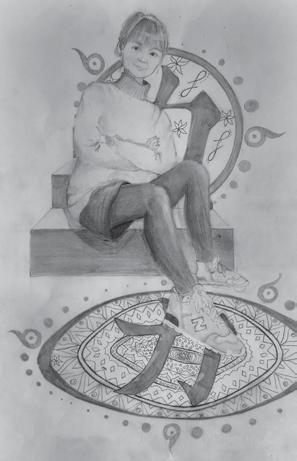
Hangzhou International School
Yue-Fan (Emma) Chen Acrylic Paint, Grade 7 (left)
Sien Li Watercolor and Ink, Grade 7 (right)

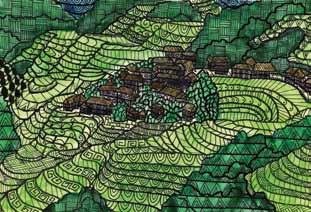
Middle School Art Celebration

American International School Vietnam
Landscape Silhouette Deer Lizzie Phan, Grade 6 Seoul Foreign School


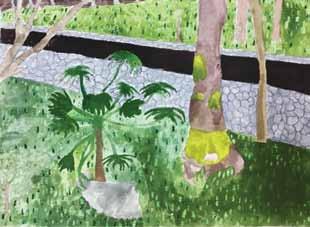


Micrography Portraits 7th Grade students Leanne Chaewon Maffey (left), Taehoon Lee (right)
American International School Vietnam
Freakin Royalty Kitty Tran, Grade 7
Brent International School Baguio
Seyoun Choi, Grade 8 (left) Watercolor painting 7.5” x 5”
Andrea Damperon, Grade 7 (bottom-left) Watercolor landscape painting 9”x13’ Korea Kent Foreign School


Rest, Alexis Kim (left) My Pet, Clara Kim (right)











